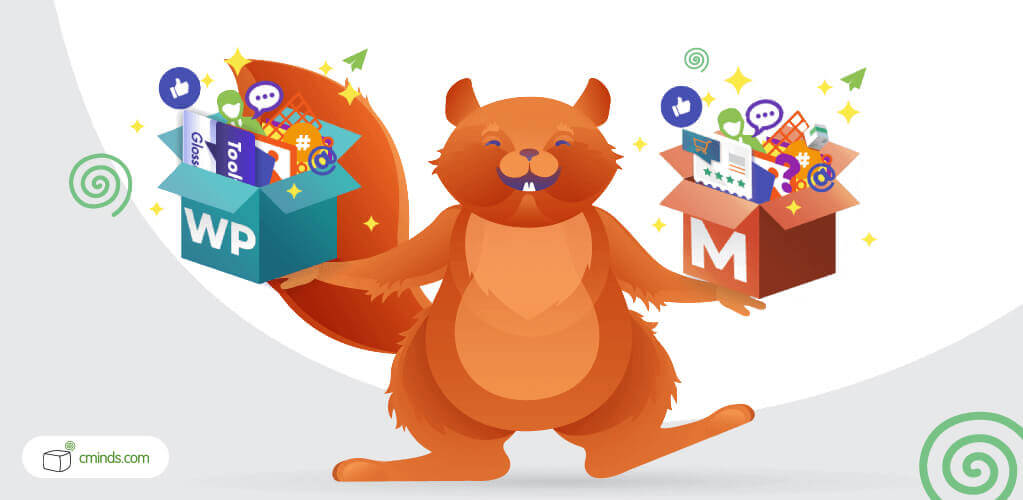A recent move by WPMU DEV inspired us at CreativeMinds to reflect on some important topics.

What’s the best way to sell WordPress plugins and Magento extensions? How to balance service quality with profitability? Where to focus our time? Are our customers happy? As a provider of products for both platforms, these are some questions that we continually ask ourselves.
April 2025 Offer – For a Limited Time Only:
Get WordPress 99+ Plugins Mega Bundle for 15% off! Don’t miss out!
WPMU DEV’s Shift
Their decision is huge – they’ve retired the overwhelming majority of their WP products, choosing instead to focus on a few core plugins (they went from around 100 plugins to less than 10).
Everything is explained in detail in their thoughtful, yet heartfelt article This Is Gonna Be Emotional, We're Setting over 90% of Our Premium Plugins Free!”. It’s been gathering quite a bit of attention and we hope the transition is smooth.
This change made us reflect for a variety of reasons. For one, they operate on the WordPress market, like us, so every shift is interesting by default. Some of our products even have similar features.
Also, they were one of the few companies that, like us, boast a huge portfolio of products. Most players choose to focus on a core, single-digit group of plugins or extensions instead.
Finally, they face the same challenges as we. If I may paraphrase Ben Parker, Spiderman’s uncle, “with a great portfolio comes great responsibility”.
What About CreativeMinds?

So, naturally, that got us thinking. Maybe we should study doing something similar?
We have over 200 products between WordPress plugins and add-ons, as well as Magento extension and their modules.
If you ask “Can I do x with a CreativeMinds product?”, chances are the answer is “yes” – or, at least, “partially, but we can consider this with some additional customization”.
At the same time, the sheer number can be overwhelming. We can’t even expect our pre-sales chat team to remember all names on the spot, let alone features – that would require photographic memory!
So, organizing information is essential. For that we have individual product pages and documentation guides – over 100 for WordPress alone, most with at least 5 articles on specific topics. Also, videos, blog posts, newsletters… You get the gist.
Perpetual Development

But that’s not all – far from it.
Most products are breathing with all sorts of updates, such as fixes, security patches, added features and new integrations. Between February and April, we had 232 releases across WordPress – that’s a whopping average of 2.6 updates a day!
Ideas come from every corner – user requests, technology improvement, our own insights. We encourage our developers to work on and improve specific products so that they take ownership. If it would be possible to feel cozy while improving a plugin, that would be our goal!
Such flow benefits from code that is easy to maintain and update, something we strive for. We also have a core code that runs on all products so that updating is as straightforward as possible.
Supporting the Support Team

Let’s not forget that premium plugins and extensions come with support tickets of all shapes and sizes – from simple “How do I add a post” to complex requests involving API integration, theme conflicts and specific use cases.
All in all, our teams process an average of 70 tickets a day, which has to be done both strategically and with care. After all, you can automate only so much when dealing with humans.
We employ multiple teams with two support tiers, which ensured a 78% “great” and 10% “ok” score during that three-month period. These are quite nice stats, but not nearly good enough, and we are working on improvements.
Last, but not least, we have frequent newcomers as well – in the same three months, we launched five WordPress and four Magento products. Before May is over, we’ll have more.
That means our developers always have their hands full with work. Managing that is a challenge in itself.
To Trim or not to Trim?

So, all things considered, how to move forward?
Cutting down 200 items to a handful would undoubtedly ease the workload of our entire staff. Less updates (critical or not), less time spent with tickets, less workload.
We thought about that, and we still do. And we concluded that the key is in the word “workload”.
You can think “workload” as a burden or as a necessary component of delivering a rich variety of products to the customers. And our bet is in the latter.
Notice: We are Not All-Seeing
Important remark: we don’t mean to imply WPMU DEV made a bad decision.
Despite the similarities, our businesses have core differences.
They provide hosting and courses, while we focus on products, customization and SEO services; they are 100% WordPress, and we also deal with Magento and eCommerce; they offer a subscription model, we favor one-time purchases.
There’s just no proper comparison.
So, Retirement is Never an Option?

As mentioned, we thought about this and we still do. We can’t commit to never retire a product and we have already retired a few that didn’t have too many users.
Reasons to retire are related mostly to low user base or a technology that’s deprecated. That can, in some degree, motivate us to gently let go of one our creations.
But switching the focus to a handful of WordPress and Magento extensions – that’s not on our horizon. We think the variety in our case wins!
Conclusion
Here at CreativeMinds we choose to have a sprawling portfolio of products. This does mean some will be stronger than others and that we spend a good amount of our time with the smaller ones.
But that’s ok.
If it means our plentiful solutions help users solve problems big and small, then we are confident it’s worth it.


